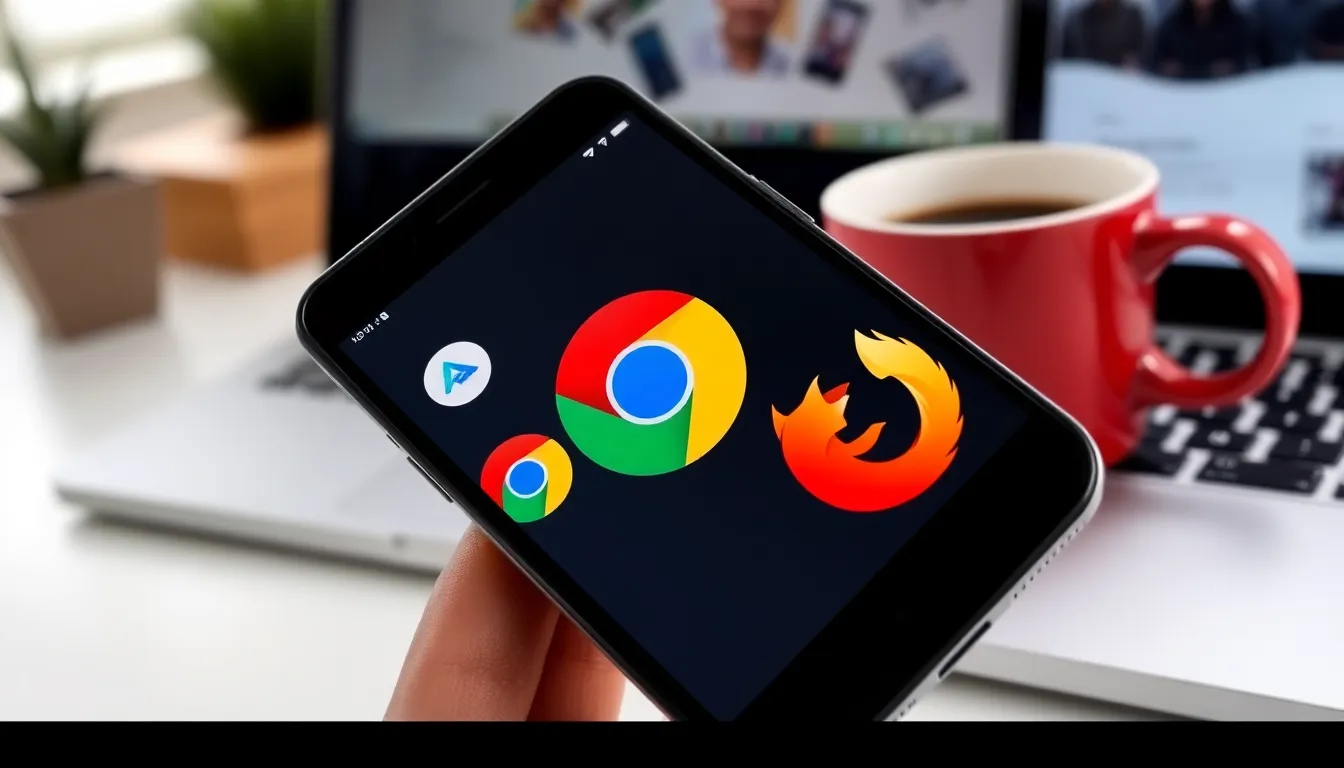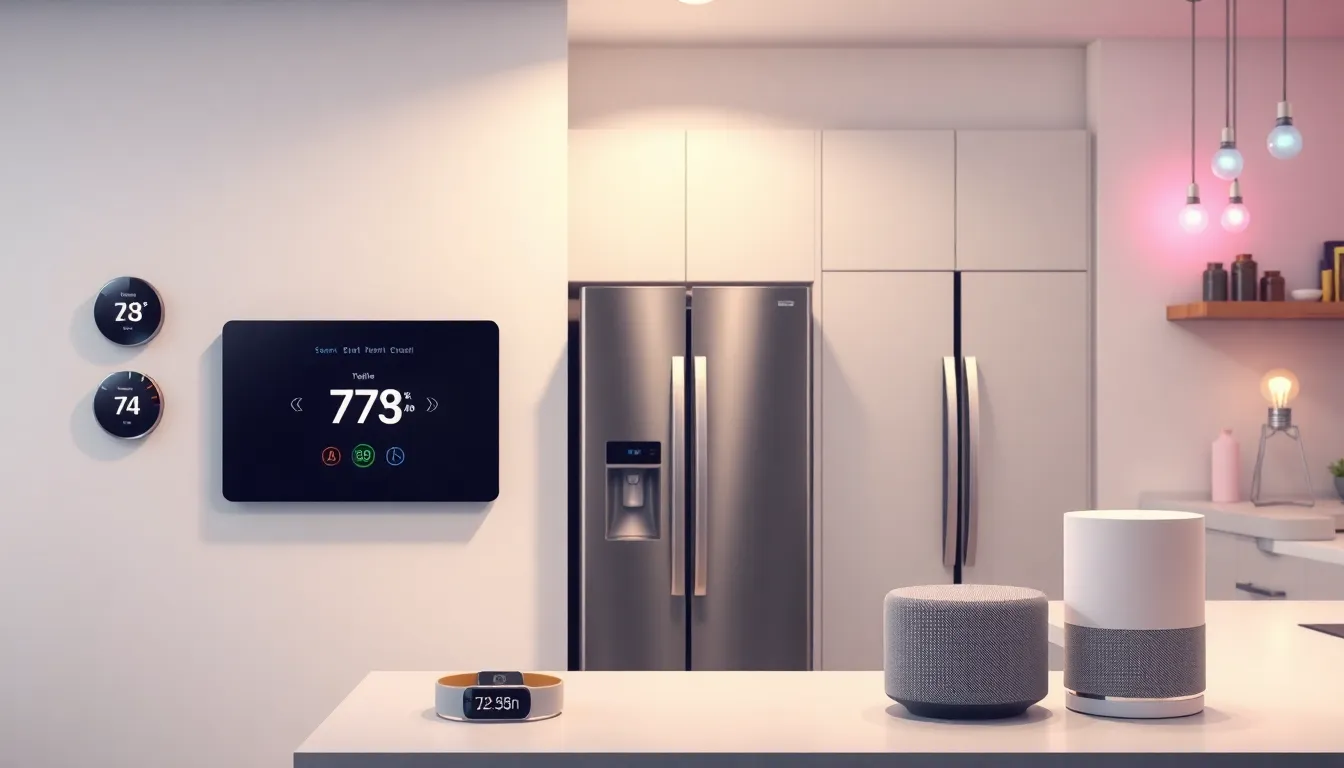Table of Contents
ToggleIn a world where browsing the internet feels like a high-speed rollercoaster, picking the right web browser on an iPhone can make all the difference. Maybe Safari’s starting to feel like that old pair of shoes—comfortable but a bit worn out. Or perhaps Chrome’s constant updates have turned it into that friend who just won’t stop talking.
Understanding Web Browsers on iPhone
Web browsers play a crucial role in how users interact with online content on iPhones. Safari serves as the default browser, integrating seamlessly with iOS features. Known for its speed and user-friendly interface, Safari offers private browsing modes and various extensions that enhance the user experience.
Another popular choice is Google Chrome. This browser syncs with Google accounts, allowing users to access bookmarks and browsing history across multiple devices. Frequent updates may provide new features but can also lead to performance issues.
Microsoft Edge presents another viable alternative for iPhone users. Edge boasts a clean interface and robust privacy tools. Users looking for enhanced security might appreciate its built-in tracking prevention features.
Firefox stands out as a good option for privacy-conscious individuals. It focuses heavily on user privacy and provides customizable settings for better control over personal data. Many users prefer Firefox’s extensive library of add-ons to tailor their browsing experience.
Opera Mini targets users with limited bandwidth, compressing pages for faster loading times. This feature makes it ideal for those on slower connections or with capped data plans.
Selecting the right browser depends on individual preferences and needs. Some users value speed, while others may prioritize privacy or data-saving features. Understanding these differences allows iPhone users to make informed choices about their browsing experiences.
Popular Web Browsers for iPhone

Choosing the right web browser enhances the browsing experience on an iPhone. Several options stand out, providing unique features tailored to user preferences.
Safari
Safari serves as the default browser for iPhone. Its seamless integration with iOS provides quick access to bookmarks, reading lists, and tab management. Users enjoy a fast browsing experience combined with energy efficiency. Features like private browsing and support for extensions protect user privacy. Regular updates improve performance and introduce new functionalities, ensuring Safari remains competitive.
Google Chrome
Google Chrome is another popular choice among iPhone users. Its ability to sync seamlessly with Google accounts enables easy access to bookmarks and browsing history across multiple devices. Users appreciate the flexibility of signing into their accounts for a personalized experience. Frequent updates bring new features and improved security, though these can occasionally impact performance. The user-friendly interface enhances navigation, catering to various user needs.
Mozilla Firefox
Mozilla Firefox attracts privacy-conscious users with its robust features. This browser provides extensive customization options, allowing users to tailor their browsing experience. Enhanced privacy controls empower users to block trackers and unwanted ads. Users can take advantage of numerous add-ons, expanding functionality for specific needs. Firefox maintains a clean interface, making it easy to navigate while focusing on user security.
Steps to Change Your Default Web Browser
Changing the default web browser on an iPhone is a straightforward process. Follow these steps to make the switch seamlessly.
Update Your iPhone
Ensure the iPhone runs the latest version of iOS for compatibility with new browsers. Users can check for updates by navigating to Settings, selecting General, and tapping Software Update. Installing the latest updates enhances performance and security.
Download and Install the New Browser
Visit the App Store to find and download the new web browser. Search for the desired browser by typing its name into the search bar. Once located, tap Get or the corresponding download button. The installation process completes quickly, allowing immediate access to new browsing features.
Set the New Browser as Default
After installation, set the new browser as the default. Open Settings, scroll down, and select the new browser from the list. Tap on Default Browser App, then choose the newly installed option. This setting ensures all web links automatically open in the selected browser.
Additional Tips for Using Different Browsers
Choosing a different browser on an iPhone comes with unique advantages. Understand the features that each browser offers. For instance, users of Safari benefit from its integration with iOS, allowing seamless use of Apple services.
Customizing privacy settings in browsers like Firefox enhances user experience. By blocking trackers and ads, it presents a more private browsing environment. Accessing add-ons in Firefox also helps tailor the browsing experience to individual preferences.
Chrome users enjoy the ability to sync between devices easily. This sync feature keeps bookmarks and browsing history consistent, making transitions smoother. However, frequent updates can occasionally disrupt performance, so staying informed about new versions is essential.
Utilizing Microsoft Edge introduces robust security features. It includes tracking prevention and other privacy tools that appeal to users prioritizing data security. The clean interface makes navigating straightforward, ensuring accessibility for all users.
For those working with limited data, Opera Mini stands out. Its page compression technology results in faster loading times, making it ideal for bandwidth conservation. Users can adjust settings for optimal performance based on their connection.
Regardless of the chosen browser, exploring settings is vital. Familiarizing oneself with the available options can greatly enhance the browsing experience. This exploration leads to more effective use of unique features, ensuring each session is productive.
Personal preferences guide the decision among browsers. Evaluating factors like speed, privacy, and interface design helps users select the most compatible option for their needs. Making informed choices ensures a satisfying experience while browsing the web on an iPhone.
Choosing the right web browser on an iPhone can significantly enhance the browsing experience. With options like Safari, Chrome, Microsoft Edge, Firefox, and Opera Mini, users can tailor their online activities to fit their needs. Each browser offers unique features that cater to different preferences regarding speed, privacy, and usability.
By exploring these options and adjusting settings, users can optimize their browsing experience. Whether prioritizing security with Firefox or speed with Opera Mini, making an informed choice is key. Users should take the time to experiment with different browsers to find the one that best aligns with their habits and preferences, ensuring a smoother and more enjoyable internet journey.





